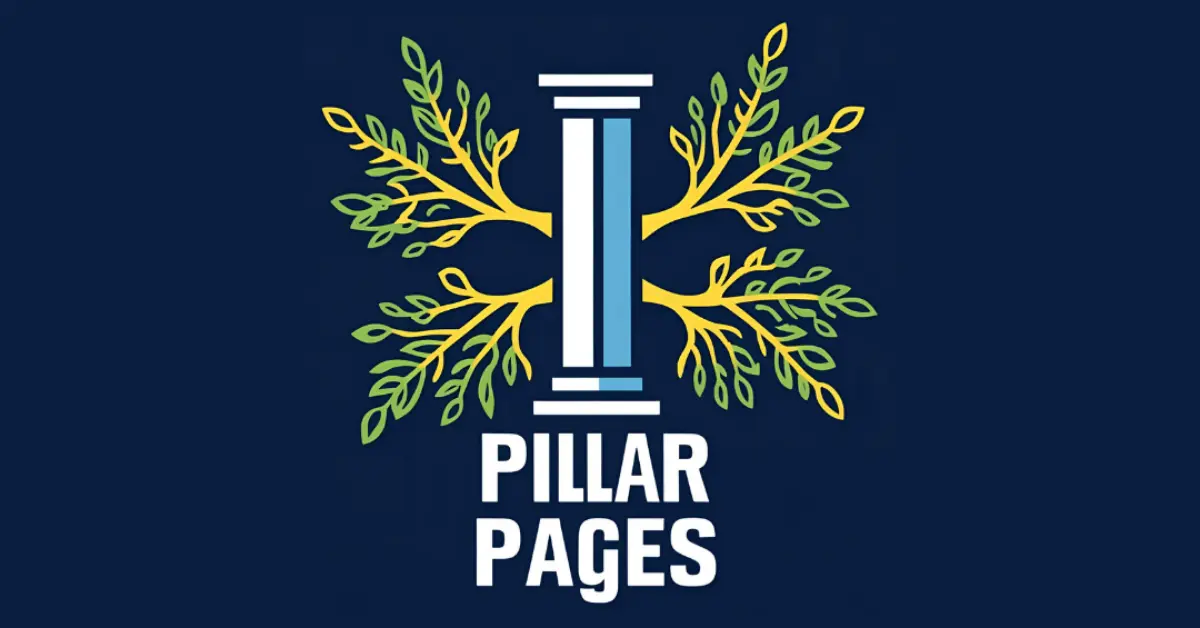What Are Pillar Pages? How Can They Improve My Website’s SEO?
Imagine having a single, comprehensive resource that acts as the ultimate guide to one of your key subject areas. A page so robust and well-linked that it not only attracts organic traffic but also seamlessly guides visitors to more in-depth information on related subtopics.
Sounds powerful, right? This is the essence of pillar pages – a foundational content strategy that can revolutionize how you organize your website, boost your SEO, and provide immense value to your audience.
Pillar pages are a cornerstone of effective content strategy in today’s digital landscape. They serve as in-depth guides on core topics, acting as central hubs that link to related, more specific content.
This article will provide a clear and comprehensive definition of pillar pages, explaining their key characteristics and why they are crucial for SEO, user experience, and establishing topical authority.
What Is a Pillar Page?
A pillar page is a comprehensive, authoritative resource on a specific core topic. Think of it as the main hub – a substantial piece of content that thoroughly covers all the essential aspects of a subject, providing a strong foundation of knowledge.
Key Characteristics of a Pillar Page:
- Broad Topic Focus: It targets a wide-ranging subject that encompasses several related subtopics. For example, a pillar page might focus on “Social Media Marketing” rather than a specific tactic like “Instagram Story Templates.”
- Comprehensive Yet Concise: While in-depth, a pillar page aims to provide a solid overview of the entire topic without delving into extreme detail on every single nuance. It hits the key points and establishes a strong understanding.
- The Central Hub: The most crucial aspect is its role as a central point that links out to a cluster of related, more specific content pieces (often called “cluster content” or “topic clusters”).
- Strategic Internal Linking: The pillar page strategically links to all the relevant cluster content, and each piece of cluster content, in turn, links back to the main pillar page. This creates a powerful web of interconnected information.
- Long-Form Content: Due to the breadth of the topic, pillar pages are typically longer and more detailed than standard blog posts.
- Designed for Clarity and Navigation: They are structured with clear headings, subheadings, and often a table of contents to make it easy for users to navigate and find the information they need.
How Pillar Pages and Topic Clusters Work Together
As the Search Engines have evolved and continue to evolve, staying ahead of the curve requires more than just churning out blog posts. Today, it’s about building a cohesive and interconnected web of content that caters to both search engine algorithms and the increasingly sophisticated ways users seek information.
Enter the dynamic duo of pillar pages and topic clusters – a strategic model that’s not just beneficial, but increasingly essential for dominating the SERPs. But to truly appreciate their synergy, let’s take a step back and understand what led to the emergence of this powerful content architecture.
The Rise of Semantic Search and the Demise of Keyword Stuffing
For years, fundamental SEO principles often revolved around targeting individual keywords, sometimes to the point of unnatural repetition. However, search engines like Google have become far more intelligent. They’ve moved towards semantic search, understanding the intent behind a user’s query and the relationships between different concepts.
This shift meant that simply peppering your content with isolated keywords was no longer effective. Search engines began to favour content that comprehensively addressed a topic and provided a holistic understanding for the user.
This created a need for a more organized and interconnected content strategy – the seeds of the topic cluster model were being sown.
The Birth of the Topic Cluster Model
The topic cluster model emerged as a logical response to this evolution. Instead of creating numerous standalone blog posts targeting similar keywords, the idea is to:
- Identify a broad core topic: This becomes the focus of your pillar page – a comprehensive, authoritative resource providing an overview of the entire subject.
- Create a cluster of related content: These are individual blog posts, articles, videos, or other content formats that delve into specific subtopics related to the main pillar page.
- Interlink strategically: The pillar page links out to each piece of cluster content, and every piece of cluster content links back to the main pillar page.
This interconnected structure signals to search engines that your website possesses deep expertise on the core topic and offers a wealth of related information. It moves away from a siloed approach to a more organized and easily understandable architecture, both for search engines and users.
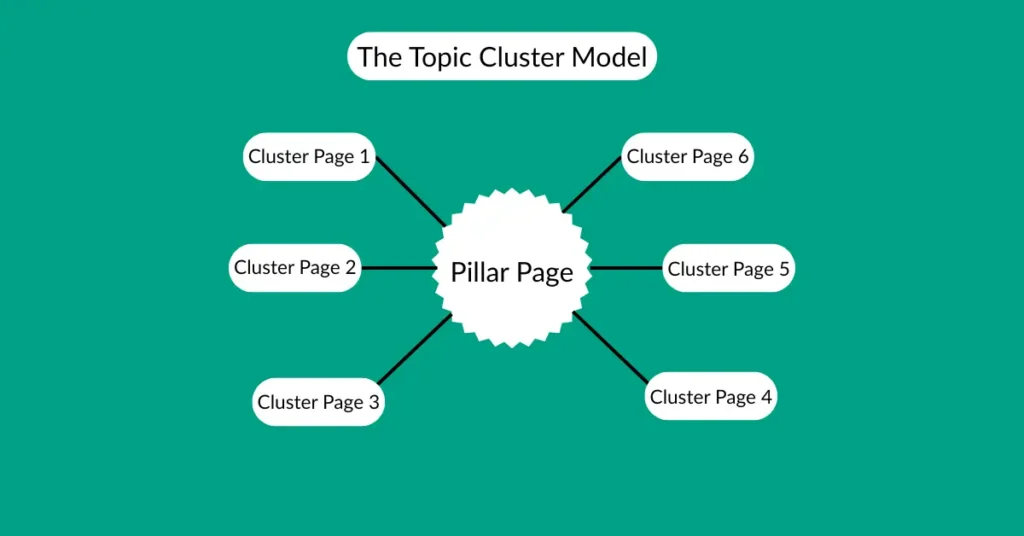
The Conversational Revolution: Voice Search and Long-Tail Queries
Another significant factor driving the importance of pillar pages and topic clusters is the dramatic rise in voice search. With the proliferation of smart speakers and virtual assistants, users are increasingly interacting with search engines using natural, conversational language.
This has led to a surge in conversational long-tail keywords – longer, more specific phrases that mimic how people speak. Instead of typing “best coffee maker,” someone might ask their smart speaker, “what is the best coffee maker for a small apartment that makes strong coffee and is easy to clean?”
Why Pillar Pages and Topic Clusters are Perfect for Conversational Search
The topic cluster model is ideally positioned to capture this growing trend of conversational search:
- Pillar Pages as Broad Answers: The comprehensive nature of a pillar page often provides a solid foundation that can address the broader aspects of a conversational query.
- Topic Clusters Targeting Specific Questions: Each piece of cluster content can be crafted to answer specific long-tail questions related to the main topic. For example, within a “Coffee Maker” pillar page, you might have cluster content like “Best Coffee Makers for Small Spaces,” “How to Clean a Coffee Maker Easily,” or “Coffee Makers That Brew Strong Coffee.”
- Natural Language Integration: By understanding the subtopics within your pillar page, you can naturally incorporate related conversational long-tail keywords into your cluster content, directly addressing the way users phrase their voice searches.
- Improved User Experience: When a user finds your pillar page through a broad voice search, the well-linked cluster content provides a seamless pathway to more specific answers they might have, mimicking a natural conversational flow.
Imagine a bicycle wheel. The pillar page is the central hub, and the topic clusters are the spokes radiating outwards. Each spoke (a blog post or other content piece) focuses on a specific subtopic related to the main hub. The links between the hub and the spokes (internal links) create a strong and organized structure.
This interconnectedness offers several benefits:
- Enhanced SEO: The strong internal linking structure signals topical authority to search engines, improving rankings for both the broad pillar page and the more specific cluster content. By comprehensively covering a topic and its related subtopics, you increase your chances of ranking for a wider range of relevant keywords, including conversational long-tail queries.
- Enhanced User Experience: Visitors can easily navigate from the broad overview on the pillar page to more specific information that interests them, creating a seamless and informative journey.
- Increased Time on Site and Reduced Bounce Rate: By providing a clear pathway to related content, you encourage users to explore more of your website, increasing engagement metrics.
- Establish Topical Authority: By comprehensively covering a core topic and linking related content, you signal to both users and search engines that you are a knowledgeable and reliable source.
The rise of semantic search and the conversational revolution driven by voice search have fundamentally changed the SEO landscape. The days of solely focusing on isolated keywords are over.
Pillar pages and topic clusters offer a strategic and sustainable approach to content creation that aligns perfectly with how modern search engines understand information and how users seek answers.
By embracing this powerful duo, you can build a content ecosystem that not only ranks higher but also provides exceptional value and a seamless experience for your audience in this increasingly conversational world.
Supercharge Your SEO With Pillar Pages
In today’s competitive digital landscape, you need a strategic approach that not only attracts visitors but also signals authority and organization to search engines.
Pillar pages help you accomplish this which is why they are a cornerstone of modern SEO that can significantly boost your search rankings and organic traffic.
In this post, we’ll dive deep into the specific ways pillar pages benefit your SEO efforts and why they should be a crucial part of your content strategy.
1. Establishing Topical Authority: Becoming the Go-To Resource
Search engines like Google favour websites that demonstrate expertise and authority on specific topics. Pillar pages, by their very nature, help you achieve this.
By creating a comprehensive, in-depth resource on a broad core topic and linking it to a cluster of related, more specific content, you’re signalling to search engines that your website is a central hub of valuable information on that subject.
Think of it like building a strong, interconnected web of knowledge. The pillar page acts as the central, authoritative source, and the surrounding cluster content reinforces its expertise on various facets of the main topic.
This interconnectedness strengthens your overall topical authority in the eyes of search engines, leading to higher rankings for relevant keywords.
To ensure your pillar and cluster content resonates with both users and search engines, it’s crucial to understand and implement Google’s E-E-A-T guidelines, which we discuss in detail in our article on Google E-E-A-T and its Impact on SEO.
2. Improved Keyword Rankings: Targeting Broad and Specific Terms
Pillar pages are strategically designed to target broad, high-volume keywords related to your core topics. Their comprehensive nature allows them to naturally incorporate a wider range of related keywords and concepts.
Furthermore, the topic cluster model helps you target long-tail keywords through the supporting blog posts. These specific queries often have lower competition and higher conversion rates.
By linking these long-tail content pieces back to the main pillar page, you funnel authority and link equity to the central resource, boosting its ranking potential for the broader target keywords.
3. Enhanced Website Structure and Crawlability
Search engine crawlers need to efficiently navigate and understand your website’s content. Pillar pages, with their clear internal linking structure, create a well-organized and easily crawlable site architecture, which are essential technical SEO considerations.
The links between the pillar page and the cluster content act as clear pathways for crawlers, helping them discover and index all your relevant content on a specific topic.
This improved crawlability ensures that search engines can effectively understand the relationships between your pages, leading to better indexing and potentially higher rankings.
By creating a well-organized and clear structure, Pillar pages make it easier for search engines as well as visitors to navigate your website.
This enhances the user experience (UX) and helps visitors find the information they’re looking for more quickly. This in turn helps your rankings as Google’s core ranking systems look to reward content that provides a good page experience.
4. Increased Link Equity and Page Authority
Internal links are a crucial factor in SEO. When you link your pillar page to relevant cluster content and vice versa, you’re distributing “link equity” throughout your website.
Internal links distribute “link equity” (Link equity, also known as link juice, is the value that a page passes to another page through a link. It’s a significant factor in search engine optimization because it helps determine how well a page ranks in search results) from one page to another within your site.
The pillar page, being the central hub, receives link equity from all the supporting content, boosting its authority. Similarly, the cluster content benefits from the link back to the authoritative pillar page.
This internal linking strategy strengthens the overall authority of your content on the chosen topic, making it more likely to rank higher in search results.
5. Better User Engagement and Lower Bounce Rates
While not a direct ranking factor, user engagement metrics like time on page and bounce rate can indirectly influence your SEO. Pillar pages, being comprehensive and well-organized, provide significant value to users.
They offer a complete overview of a topic, making it more likely that visitors will spend more time on the page and explore the linked cluster content for deeper insights.
A lower bounce rate and increased time on-site signal to search engines that your content is relevant and valuable to users, which can positively impact your rankings.
6. Consolidation of Content and Prevention of Keyword Cannibalization
Over time, websites can accumulate numerous blog posts that inadvertently target the same or very similar keywords. This “keyword cannibalization” can confuse search engines and dilute your ranking potential.
Pillar pages help you consolidate your content around core topics. By creating a central, authoritative resource, you can strategically link existing (and future) content that delves into specific subtopics back to the pillar page. This clarifies the focus of each piece of content and prevents them from competing against each other in search results.
To sum up, Pillar pages are not just a content organization strategy, they are a powerful tool for enhancing your website’s SEO.
By establishing topical authority, improving keyword rankings, optimizing site structure, boosting link equity, enhancing user engagement, and consolidating your content, pillar pages can significantly contribute to increased organic traffic and improved search engine visibility.
Step-by-Step Guide To Creating A Pillar Page
Building a compelling pillar page might seem daunting, but by following a structured approach, you can create a content powerhouse that serves as a central hub for your key topics.
As a part of the planning for Pillar Pages, we highly recommend conducting an SEO audit which will help you identify opportunities for pillar pages on your site. Content Analysis is about evaluating the quality, relevance, and effectiveness of your existing content and charting a course for future content creation that aligns with your SEO goals and user needs.
It would also be beneficial to understand competitor content strategies. Content analysis, as part of your SEO competitor analysis, allows you to understand what content strategies are working for your rivals, enabling you to refine your own approach.
This step-by-step guide will walk you through the process of creating a Pillar Page:
Step 1: Identify Your Core Topic
The foundation of a successful pillar page is choosing the right core topic. This should be a broad subject area that is:
- Central to your business or niche: It should align with your expertise and the products or services you offer.
- Of high interest to your target audience: It should address their pain points, answer their questions, or provide valuable information they actively seek.
- Broad enough to encompass multiple subtopics: This will allow you to create a rich cluster of related content.
- Supported by sufficient search volume: While not the only factor, ensure there’s enough interest in the topic to drive organic traffic.
Brainstorm 3-5 broad topics that fit these criteria. Conduct preliminary keyword research to gauge their potential.
Step 2: Conduct Thorough Keyword Research
Once you’ve identified your core topic, it’s time to understand how to perform effective keyword research. This will help you know about:
- The main keywords your target audience uses to search for information related to your core topic.
- Related subtopics and long-tail keywords will form your content cluster. Google Search’s “People Also Ask” section is a good place to search for questions related to the topic.

Also, check the “People Also Search For” section for more keyword ideas for cluster pages.
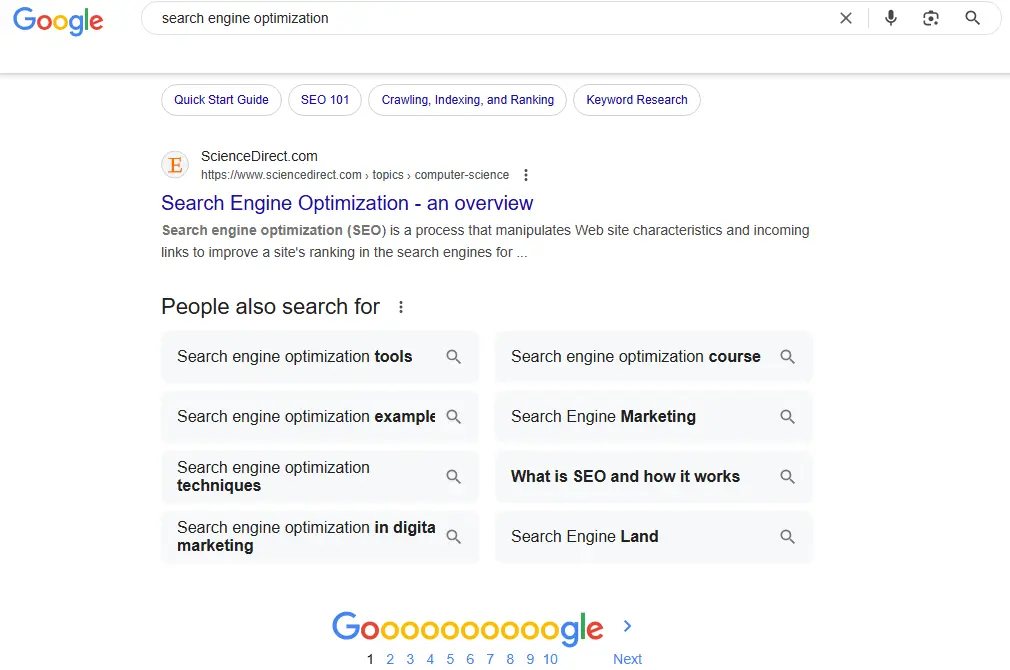
- Thorough Keyword Research will help you understand the search intent behind these queries, helping you tailor your content effectively.
While doing keyword research, it’s important to remember that Google recommends focusing on creating “people-first content”. Content where visitors feel they’ve had a satisfying experience will be rewarded, while content that doesn’t meet a visitor’s expectations won’t perform as well.
Google’s advice is to create content for people, not for search engines. People-first content creators must focus first on creating satisfying content, while also utilizing SEO best practices to bring searchers additional value.
Google says “Answering yes to the questions below means you’re probably on the right track with a people-first approach:
- Do you have an existing or intended audience for your business or site that would find the content useful if they came directly to you?
- Does your content clearly demonstrate first-hand expertise and a depth of knowledge (for example, expertise that comes from having actually used a product or service, or visiting a place)?
- Does your site have a primary purpose or focus?
- After reading your content, will someone leave feeling they’ve learned enough about a topic to help achieve their goal?
- Will someone reading your content leave feeling like they’ve had a satisfying experience?
- Are you keeping in mind our guidance for core updates and for product reviews?”
Use keyword research tools (like Google Keyword Planner, Ahrefs, SEMrush) to identify primary and secondary keywords, as well as related questions and phrases. Organize these keywords into potential subtopics for your cluster content.
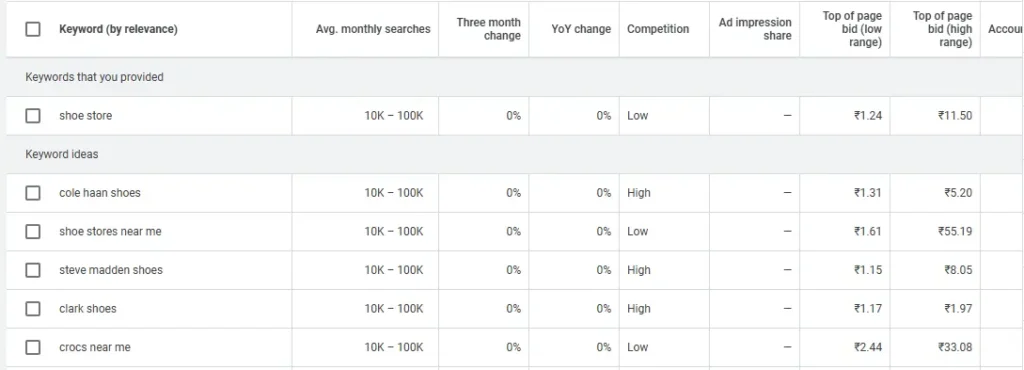
Step 3: Plan Your Pillar Page Structure and Content
With your core topic and keywords in hand, it’s time to outline your pillar page. Think of it as creating a detailed table of contents for the entire subject. Your pillar page should:
- Provide a comprehensive overview: Cover all the essential aspects of your core topic without getting bogged down in excessive detail.
- Be logically organized: Use clear headings, subheadings, and potentially a table of contents to improve readability and navigation.
- Naturally incorporate primary and secondary keywords: Weave in your target keywords throughout the text in a natural and helpful way.
- Identify key sections that will link to your cluster content: As you outline, think about the specific subtopics that deserve their own dedicated blog posts or resources.
Create a detailed outline of your pillar page, including main sections and key points within each section. Map out potential linking opportunities to your future cluster content.
Step 4: Develop Your Pillar Page Content
Now comes the content creation phase. Focus on producing high-quality, valuable, and engaging content for your pillar page. Remember:
- Aim for comprehensiveness: Cover the topic thoroughly enough to be a go-to resource.
- Prioritize clarity and readability: Use clear language, short paragraphs, bullet points, and visuals (images, videos, infographics) to break up the text and enhance understanding.
- Evergreen content: Pillar pages are evergreen content, evergreen content is content that remains relevant and valuable to your audience over a long period, without needing frequent updates.
The pillar page itself doesn’t necessarily need constant overhauls. Instead, as new developments or more specific information emerges, you can create new cluster content (blog posts, articles, etc.) and link them back to the central pillar page.
Because they target enduring topics and build strong internal linking structures, well-optimized pillar pages become long-term SEO assets. They can continue to attract organic traffic and build authority for years to come.
- Ensure accuracy and authority: Back up your claims with credible sources and showcase your expertise.
- Include a clear call to action: Guide users on what to do next, whether it’s exploring related content, downloading a resource, or contacting you.
- On-Page SEO: Optimize your Pillar Page using the best practices for on-page SEO.
- Include useful links: Pillar pages act as content hubs and often include many internal links. Only include relevant links, include internal links to cluster pages and optimize the anchor text.
Write your pillar page content, focusing on providing a solid foundation of knowledge on your chosen topic. Don’t strive for extreme detail in every section; that’s where your cluster content will come in.
Step 5: Create Your Cluster Content
Your pillar page is the hub; now it’s time to create the spokes – your topic clusters. These are individual pieces of content (blog posts, articles, videos, etc.) that delve into the specific subtopics identified in your keyword research and pillar page outline.
- Each cluster piece should focus on a specific long-tail keyword or subtopic.
- The content should provide in-depth information on that specific aspect.
- Maintain high quality and provide genuine value to your audience.
Based on your keyword research and pillar page outline, create a content calendar for your cluster content. Prioritize topics that are most relevant and have the highest search potential.
Step 6: Implement a Robust Internal Linking Strategy
This is where the magic truly happens and the SEO benefits kick in. You need to strategically link your pillar page and your cluster content:
- Link from your pillar page to each piece of relevant cluster content. Do this naturally within the body of your text where you discuss the related subtopic.
- Link back from each piece of cluster content to your main pillar page. Make this link clear and easy to find (e.g., in the introduction or conclusion).
As you create your cluster content, actively look for opportunities to link back to your pillar page and vice versa. Ensure the anchor text (the words you use for the link) is relevant to the target page.
Step 7: Design and Optimize for User Experience
A well-structured and informative pillar page is only effective if users can easily navigate and engage with it. Pay attention to:
- Visual appeal: Use a clean and professional design that is easy on the eyes.
- Mobile responsiveness: Optimize for mobile devices. Ensure your pillar page looks and functions flawlessly on all devices.
- Fast loading speed: Optimize images and other technical SEO elements to ensure quick loading times.
- Clear navigation: Use headings, subheadings, and a table of contents to help users find the information they need.
Review your pillar page on different devices. Use website speed testing tools to identify areas for improvement.
Step 8: Promote Your Pillar Page
Once your pillar page is live and linked to your initial cluster content, it’s time to promote it!
- Share it on social media.
- Include it in relevant email newsletters.
- Link to it from other relevant pages on your website.
- Consider paid advertising to reach a wider audience.
Create a promotion plan for your pillar page and consistently share it across your marketing channels.
Step 9: Continuously Monitor, Analyze, and Update
Creating a pillar page is not a one-time task. You need to continuously monitor its performance, analyze its results, and update it as needed.
- Track key metrics: Monitor organic traffic, time on page, bounce rate, and conversions.
- Analyze search engine rankings: See how your pillar page and cluster content are performing for your target keywords.
- Update content regularly: Keep your pillar page and cluster content fresh and accurate. Add new information, address new questions, and link to new relevant cluster content as you create it.
Set up analytics tracking for your pillar page and regularly review its performance.
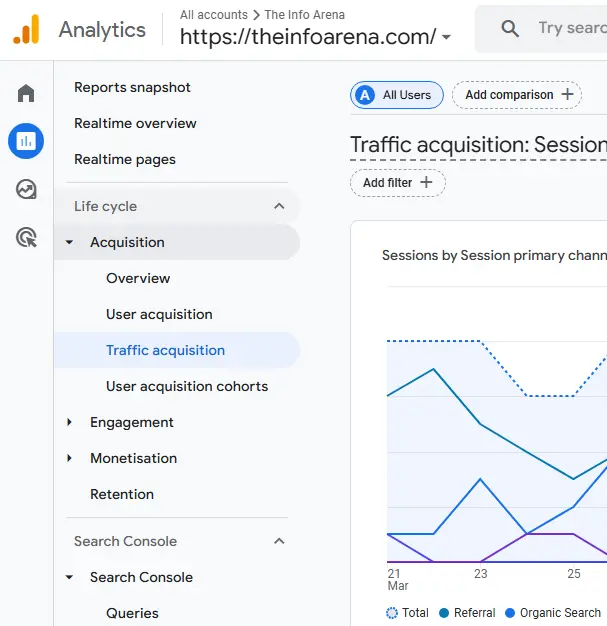
Use Google Search Console to track the performance of these pages.
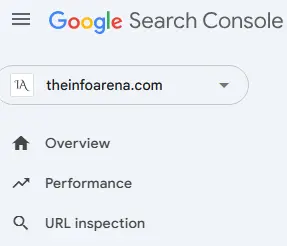

Building a successful pillar page and its associated topic cluster takes time and consistent effort. Don’t expect overnight results.
Focus on creating high-quality, valuable content and building a strong network of interconnected resources. Over time, you’ll see the benefits of improved SEO, increased organic traffic, and a more engaged audience.
Types of Pillar Pages
You now know the power of pillar pages in organizing your content and boosting your SEO. But did you know that not all pillar pages are created equal?
Just as there are various content formats, there are different approaches you can take when building your central content hubs. Understanding these types of pillar pages can help you choose the best strategy for your specific topics and audience.
While the core principle of a comprehensive resource linking to related content remains the same, the focus and structure can vary. Here are some common types of pillar pages:
1. The “10x Content” Pillar Page
This type of pillar page aims to be the absolute best resource available online for a specific broad topic. It’s not just comprehensive; it’s exceptional in its depth, quality, presentation, and user experience.
Characteristics:
- Extremely In-Depth: Covers every crucial aspect of the topic with significant detail.
- High-Quality Research & Data: Often incorporates original research, statistics, expert opinions, and compelling data.
- Visually Engaging: Utilizes high-quality images, videos, infographics, and interactive elements to enhance understanding and engagement.
- Exceptional User Experience: Well-structured, easy to navigate, and optimized for all devices.
- Often Longer Than Standard Pillar Pages: The sheer depth of information usually results in a longer page.
This type of Pillar page is best used for highly competitive topics where you want to establish undisputed authority. Topics where comprehensive data and visual explanations are crucial.
Example: A page titled “The Beginner’s Guide to SEO” by Moz with sections covering all major aspects of SEO, from keyword research to technical SEO and link building. It’s designed as a learning journey, encouraging the reader to execute and test concepts.
The article is divided into chapters, each focusing on a specific aspect of SEO. This structure allows for in-depth exploration of each topic.
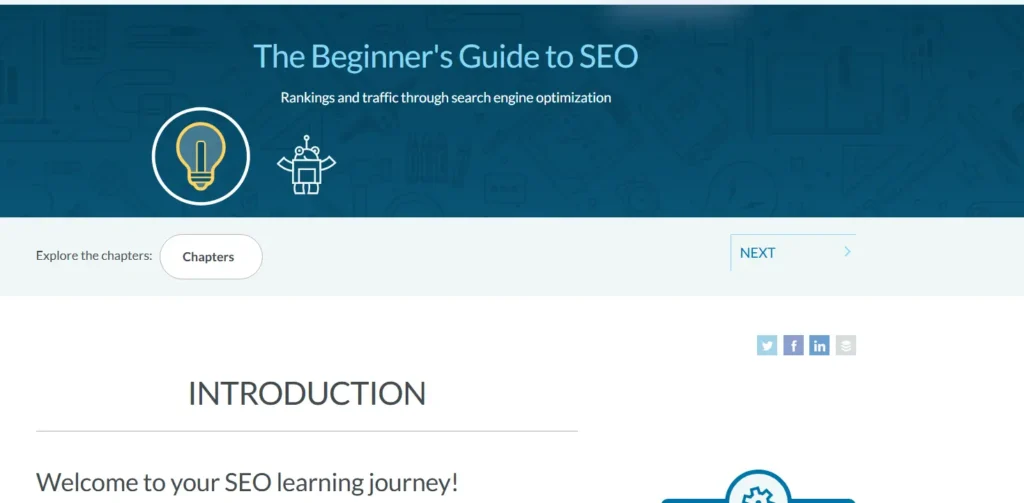
2. The “How-To” Pillar Page
This type of pillar page focuses on providing a step-by-step guide to a complex process or achieving a specific outcome. It breaks down a larger task into manageable stages, with each step potentially linking to more detailed content.
Characteristics:
- Process-Oriented: Clearly outlines the steps involved in achieving a specific goal.
- Actionable Advice: Provides practical tips and guidance that users can implement.
- Logical Flow: Presents information in a sequential and easy-to-follow manner.
- Often Includes Visual Aids: Diagrams, screenshots, and videos are commonly used to illustrate each step.
This type of Pillar page is best used for topics that involve a multi-stage process.
Example: A detailed page titled “How to make a website from scratch in 12 steps” by Hostinger with sections covering planning, domain registration, hosting setup, platform selection, design, content creation, and launch, each linking to more specific guides.
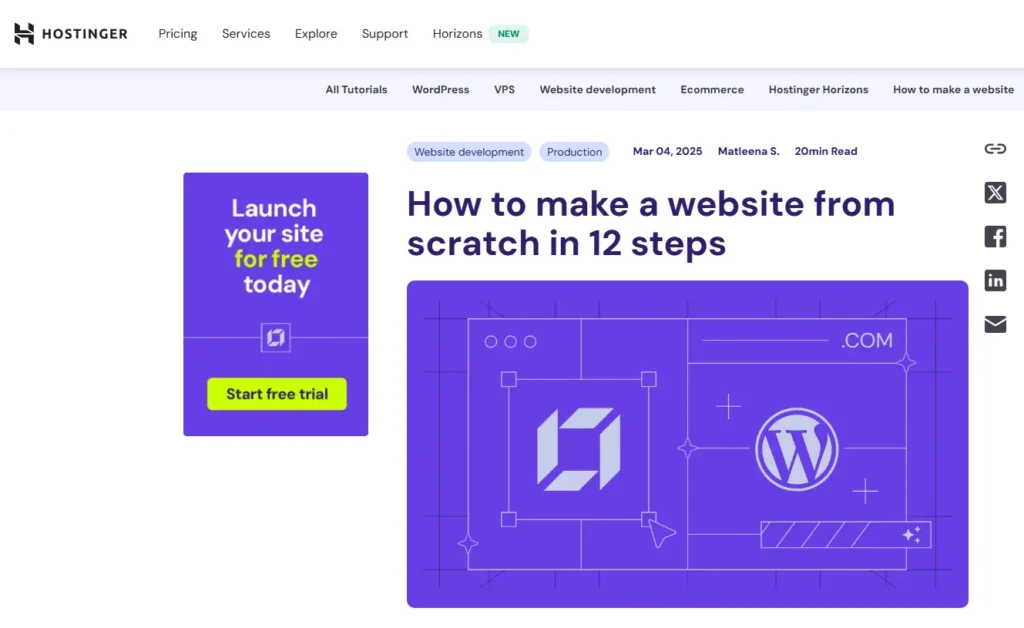
3. The “Resource” Pillar Page
This type of pillar page acts as a curated collection of valuable resources, tools, and information related to a specific broad topic. It doesn’t necessarily delve deep into every aspect itself but serves as a central directory to helpful content.
Characteristics:
- Curated List: Organizes and presents a selection of relevant articles, tools, templates, case studies, and external resources.
- Categorized for Easy Navigation: Resources are typically grouped into logical categories for easy browsing.
- Brief Descriptions: Each resource often includes a short description explaining its value.
- A mix of Internal and External Links: Can link to both your own in-depth content and valuable external websites.
This type of Pillar page is best used for topics where there are numerous tools, templates, or related concepts that users need access to. Topics where you want to position yourself as a helpful curator.
Example: A page titled “8 Best AI SEO Tools for 2025” by SEMrush featuring categorized links to content generation, recommendation, optimization, brainstorming, automation, keyword discovery and research.
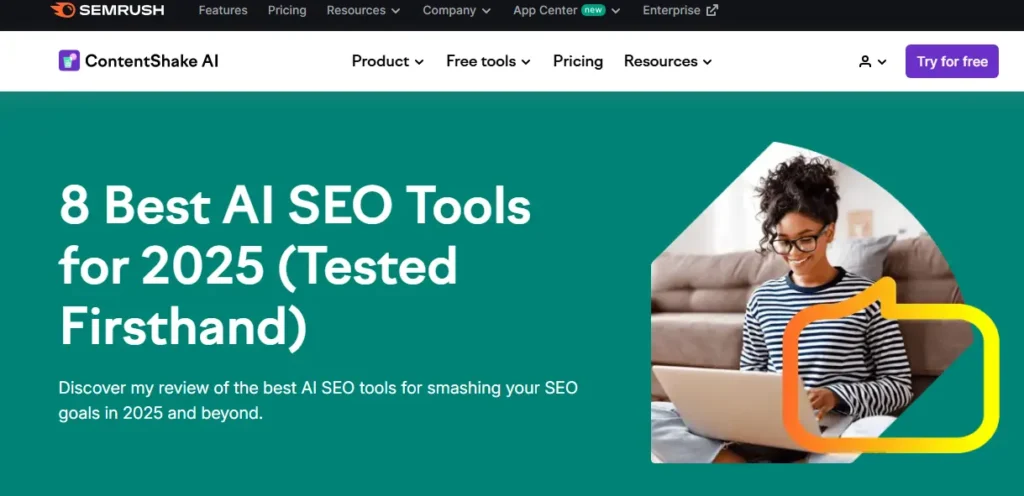
4. The “Product/Service” Pillar Page
For businesses, a core product or service can serve as a natural pillar page. This page provides a comprehensive overview of the offering, its features, benefits, and use cases, and often links to more specific information or related content.
Characteristics:
- Focuses on a Specific Offering: Centers around a key product or service.
- Highlights Features and Benefits: Clearly explains what the product/service does and how it helps users.
- Showcases Use Cases and Examples: Illustrates how the offering is applied in different scenarios.
- Links to Specific Features, Pricing, and Case Studies: Connects to more detailed information about different aspects of the product/service.
This type of Pillar page is best used for core products or services that have multiple features, and use cases, or target different customer segments.
Example: This product/service pillar page by Moz is dedicated to showcasing “Moz Pro“, their main SEO software suite. It highlights key features (Keyword Research, Rank Tracking, Site Crawl, Link Research), benefits, and use cases.
Each feature section links to more specific pages or sections that delve deeper into the functionality and value of that particular aspect of Moz Pro. For example, the “Keyword Research” section links to a page explaining their keyword research tools.
The page aims to educate potential customers about Moz Pro’s capabilities and guide them through the sales funnel.
It targets broad keywords like “SEO software” and “SEO tools,” while the linked pages target more specific, long-tail keywords related to individual features.
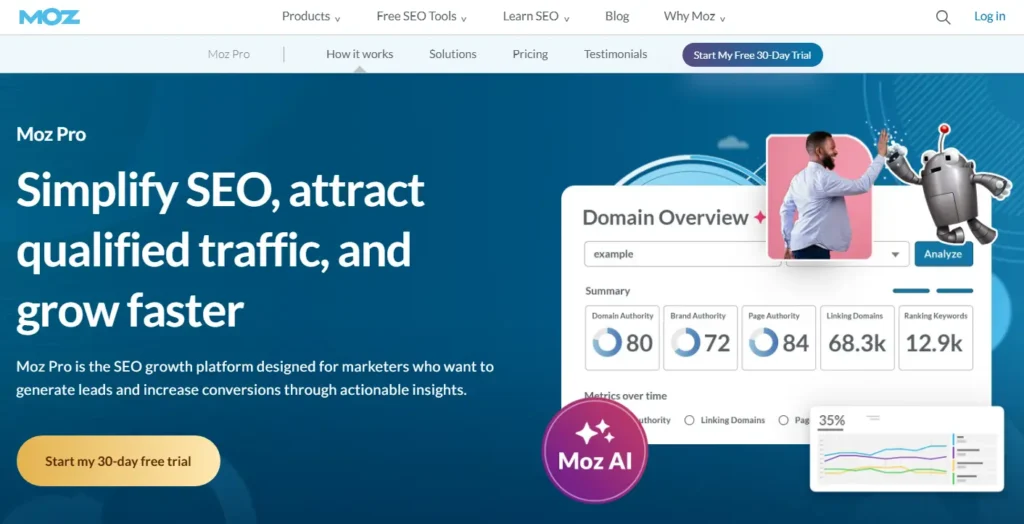
Choosing the Right Type
The best type of pillar page for you will depend on several factors:
- Your Core Topic: Some topics naturally lend themselves to a “how-to” format, while others are better suited for a resource hub.
- Your Audience’s Needs: Consider what kind of information and format will be most valuable and engaging for your target users.
- Your Content Goals: Are you aiming to establish deep authority, guide users through a process, or provide a central directory of resources?
- Your Existing Content: Analyze your current content library to identify areas where you can build effective topic clusters.
By understanding these different types of pillar pages, you can move beyond a one-size-fits-all approach and create content hubs that are strategically aligned with your goals and effectively serve your audience.
Best Practices For Effective Pillar Pages
So, how do you create pillar pages that truly deliver results? Crafting an effective pillar page isn’t just about throwing a lot of information onto one long page. It requires strategic planning, meticulous execution, and a focus on both user experience and SEO.
Here are the best practices to follow to ensure your pillar pages become powerful assets for your content strategy:
Strategic Internal Linking is Non-Negotiable:
- Pillar to Cluster: Prominently link from relevant sections within your pillar page to your supporting cluster content using descriptive anchor text.
- Cluster to Pillar: Ensure every piece of cluster content links back to the main pillar page, ideally in the introduction and conclusion.
- Contextual Linking: Link naturally within the text where the related subtopic is mentioned. Avoid forced or irrelevant links.
Optimize for On-Page SEO:
- Compelling Title Tag and Meta Description: Craft engaging and keyword-rich title tags and meta descriptions to improve click-through rates from search results.
- Strategic Header Usage: Use your primary keyword in the H1 tag and relevant secondary keywords in subsequent headings.
- Image Optimization: Use descriptive file names and alt text for all images.
- URL Structure: Use a clear and concise URL structure for your pillar page.
Include a Clear Call to Action (CTA):
- Guide the User: Tell users what you want them to do next. This could be exploring related cluster content, downloading a resource, signing up for an email list, or requesting a demo.
- Contextual CTAs: Place CTAs strategically within the content where they are most relevant to the information the user has just consumed.
- The choice depends on your specific goals, target audience, and the type of pillar page you’ve created.
Here’s a breakdown of the arguments for both sides:
Arguments for Keeping Pillar Pages Ungated:
- Maximizing SEO Benefits: Ungated pillar pages are fully accessible to search engine crawlers. This allows search engines to understand the comprehensive content and the interconnectedness with your topic clusters, leading to better rankings for broad keywords and increased organic traffic.
- Establishing Topical Authority: Making your most authoritative content freely available helps establish you as a thought leader and a go-to resource in your industry. This builds trust and credibility with a wider audience.
- Driving Awareness and Reach: Ungated content can be easily shared across social media and other channels, increasing your reach and brand awareness.
- Top of the Funnel Engagement: Pillar pages often target broad topics, attracting users in the early stages of their research. Ungating them allows these prospects to learn and engage with your expertise without immediate commitment.
- Facilitating Internal Linking: Ungated pillar pages can be easily linked to from various parts of your website and external sources, strengthening their authority and SEO value.
Arguments for Gating Pillar Pages:
- Lead Generation: Gating a high-value, comprehensive pillar page can be a powerful lead generation tactic. Users who are willing to provide their contact information to access such in-depth content are often more qualified leads.
- Gathering Valuable Data: Gating allows you to collect information about who is engaging with your most valuable content, providing insights into their interests and needs.
- Higher Perceived Value: Gated content can sometimes be perceived as more valuable or exclusive, potentially increasing the quality of leads you attract.
- Direct Follow-Up and Nurturing: Once you have a user’s contact information, you can follow up with them directly and nurture them through your sales funnel.
Factors to Consider When Deciding:
- The Goal of the Pillar Page: Is your primary goal to drive organic traffic and build authority (ungated)? Or is it to generate qualified leads (gated)?
- The Depth and Value of the Content: Is your pillar page truly a substantial, “10x” resource that warrants a form submission? Or is it more of a comprehensive overview?
- Your Target Audience: How likely is your audience to fill out a form to access this type of information? Are they accustomed to gating in your industry?
- Your Sales Cycle: If you have a longer sales cycle and need to nurture leads, gating might be more beneficial.
- Your Current Traffic and Lead Generation Strategy: If you already have strong organic traffic, gating high-value content could be a good way to convert some of that traffic into leads. If you’re struggling with traffic, ungating might be a better first step.
- The Type of Pillar Page: A “Resource” pillar page with downloadable templates or tools might be a good candidate for gating, while a “How-To” or “10x Content” page aimed at broad education might be better ungated.
- You could also choose to offer a substantial, ungated summary of the pillar page’s key points, with a clear call to action to download a more detailed, gated version (e.g., a PDF checklist, a more in-depth guide).
- Another option is to keep the main pillar page ungated, but valuable supplementary resources mentioned within it (templates, worksheets, advanced guides) are offered behind a form.
Conclusion
I want to conclude by thanking you for reading the post. You now have a solid understanding of how to create Pillar Pages and employ the Pillar Page and topic cluster model to boost your SEO.
Ultimately, pillar pages represent a fundamental shift in how we approach content creation and SEO. They move us away from fragmented, keyword-centric content towards a more holistic and user-focused strategy.
By investing in these comprehensive resources, you’re not only laying a strong foundation for improved search rankings and increased organic traffic but also creating immense value for your audience, establishing yourself as a true authority in your niche for years to come.
These Pillar Pages are more than just long-form content, they are strategic hubs that satisfy user intent as well as provide a clear roadmap for search engines to understand the depth and breadth of your expertise.
By embracing the pillar page and topic cluster model, you’re not just creating content, you’re building a sustainable and high-performing content ecosystem.
We’re here to support you on your SEO journey – feel free to reach out with any questions!

